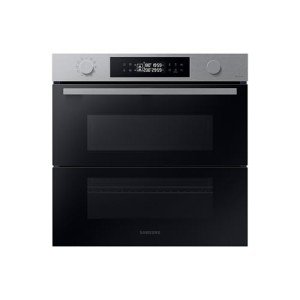The Rise of Built-In Ovens: A Seamless Approach to Modern Cooking
In contemporary kitchen areas, where design aesthetics mix perfectly with functionality, one home appliance stands out as a true video game changer: the built-in oven. As homeowners and chefs alike continue to seek ingenious services that improve their cooking experience, built-in ovens have become increasingly popular. This article checks out the advantages, factors to consider, and trends surrounding built-in ovens, highlighting why they are an important feature in modern cooking spaces.
What is a Built-In Oven?
A built-in oven is a kitchen appliance developed to be integrated into the kitchen cabinetry of a kitchen area instead of standing alone. Unlike conventional freestanding ovens, which can be moved and placed anywhere, built-in ovens been available in different styles and sizes to fit specifically within designated areas. Readily available in single or double setups, these ovens provide a streamlined appearance that complements modern kitchen area styles.

Advantages of Built-In Ovens
1. Space-Saving Design
One of the most attractive advantages of built-in ovens is their space-saving design. By incorporating built in ovens uk into cabinetry, you can free up valuable counter and flooring area. This is especially beneficial in smaller sized cooking areas, where maximizing space is essential. Built-in ovens can be installed at eye level, making them more accessible and reducing the need to bend down.
2. Visual Appeal
Built-in ovens contribute to a smooth and cohesive kitchen area style. Available in different surfaces-- such as stainless-steel, black, white, and custom-made kitchen cabinetry-- they can mix seamlessly into the general design. This visual appeal boosts the kitchen area's visual harmony and elevates the space, producing a modern-day and advanced environment.
3. Enhanced Functionality
Many built-in ovens come geared up with sophisticated cooking technologies, such as convection cooking, steam ovens, and wise functions. These improvements permit versatile cooking options, making it easier to attain professional-level results in your home. Smart built-in ovens can even link to Wi-Fi, allowing users to control the oven from another location, receive alerts, and gain access to a range of cooking programs and dishes.
4. Improved Ventilation
Since built-in ovens can be integrated with kitchen area hoods and ventilation systems, they can help maintain better air quality and minimize cooking smells. This is especially substantial for those who like to cook with fragrant spices and ingredients, as an effective ventilation system can keep the kitchen comfortable and welcoming.
5. Modification Options
Built-in ovens offer a wide range of customization choices to match private cooking styles and needs. From professional-grade devices with multiple cooking modes to compact styles for smaller kitchens, homeowners can choose the oven that fits their specific requirements. Many manufacturers also provide personalized front panels, permitting you to match the oven's look to your kitchen cabinetry for a really unified look.
Considerations When Choosing a Built-In Oven
While built-in ovens have many advantages, there are necessary factors to consider to remember before purchasing:
1. Rate
Built-in ovens usually come with a higher price than their freestanding counterparts due to their design and installation requirements. It's crucial to aspect in both the expense of the oven and any extra expenses associated with cabinets adjustments or installation.
2. Setup Requirements
Installing a built-in oven frequently requires professional support, specifically if you need to customize existing cabinetry. Make sure that you think about any expenses related to setup, consisting of labor and potential kitchen cabinetry adjustments.
3. Size and Dimensions
Before purchasing a built-in oven, measure the designated space properly to guarantee a proper fit. Built-in ovens can be found in various sizes and setups, so selecting one that aligns with your needs and kitchen style is vital.
4. Lifestyle and Usage
Consider your cooking routines and requires when picking a built-in oven. If you often host big gatherings, a double oven might be more advantageous. On the other hand, if you have a compact kitchen, a single-wall oven might be enough.
Patterns in Built-In Ovens
The kitchen area appliance market is constantly evolving, and built-in ovens are not exempt from emerging patterns. Some existing trends consist of:
Smart Technology Integration: With the increase of wise home technology, built-in ovens now often feature connectivity alternatives. This allows users to keep track of cooking progress and adjust settings by means of mobile apps.
Energy Efficiency: As sustainability ends up being a concern, numerous manufacturers are investing in energy-efficient built-in ovens that reduce energy intake while preserving efficiency.
Multi-functional Designs: Built-in ovens now use functions such as air frying, sluggish cooking, and steaming, providing adaptability that meets a wide variety of cooking approaches.
Conclusion
Built-in ovens certainly represent an ideal blend of design, function, and convenience in today's cooking areas. As more property owners choose this contemporary option, the focus moves to developing a cooking space that is as visually pleasing as it is useful. Whether you are constructing a new home or remodeling your cooking area, considering a built-in oven could raise your culinary experience and change your cooking area into a stylish and functional haven. With a range of choices readily available and continuous developments in technology, built-in ovens remain a standout choice for both newbie cooks and culinary enthusiasts alike.
